Table of content
Lotus root tips, also known as lotus sprouts or ou jian in Mandarin, are a delicate and crunchy vegetable prized in Asian cuisine. Their refreshing texture and subtle sweetness make them a popular addition to stir-fries, salads, and soups. However, a persistent question lingers in kitchens worldwide: Should lotus root tips be blanched before stir-frying? This debate pits culinary tradition against modern convenience, texture preferences, and nutritional concerns. This article explores the science, cultural practices, and practical tips surrounding this question, offering a comprehensive guide to mastering the art of cooking lotus root tips.
Understanding Lotus Root Tips
Before diving into the blanching debate, it’s essential to grasp what lotus root tips are and why they’re valued. Lotus roots (Nelumbo nucifera) grow underwater in muddy ponds and lakes, and their tips are the tender, young shoots harvested before the plant matures. These shoots are cylindrical, pale white, and filled with tiny holes that run lengthwise. When cooked, they retain a satisfying crunch, making them a textural counterpart to softer vegetables like spinach or mushrooms.
Nutritionally, lotus root tips are low in calories but rich in dietary fiber, vitamin C, and potassium. They also contain antioxidants like flavonoids, which contribute to their reputation as a health-promoting food. However, their growing environment—muddy water—raises questions about hygiene and the need for pre-cooking preparation.
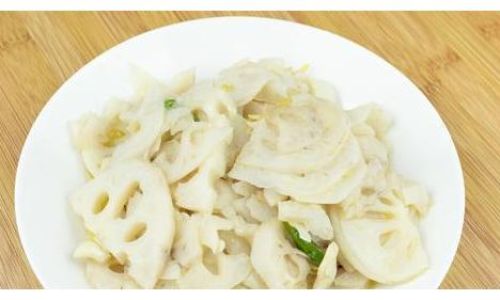
The Case for Blanching: Why Some Chefs Swear By It
Blanching—the process of briefly boiling vegetables before shocking them in ice water—is a common technique in professional kitchens. Advocates argue it offers several benefits when applied to lotus root tips:
Removing Impurities and Parasites
Lotus roots grow in muddy aquatic environments, which can harbor bacteria, parasites, or residual pesticides. Blanching in boiling water (at least 185°F/85°C) for 1–2 minutes can kill harmful microorganisms and reduce the risk of foodborne illness. While thorough washing can remove surface dirt, blanching provides an extra layer of safety, especially for raw or lightly cooked preparations.
Enhancing Texture and Appearance
Raw lotus root tips have a firm, almost rubbery texture. Blanching softens their cell walls slightly, creating a tender yet crisp bite that many find more palatable. Additionally, blanching neutralizes enzymes that cause browning, preserving the vegetable’s bright white color. Without blanching, lotus root tips may oxidize and turn grayish-brown when exposed to air, ruining their visual appeal.
Shortening Cooking Time
Stir-fries require high heat and quick cooking to preserve texture and flavor. Blanched lotus root tips partially cook, reducing the time needed in the wok. This prevents overcooking other ingredients, such as meat or delicate vegetables, ensuring a harmonious dish.
Reducing Starchiness
Lotus root tips contain natural starches that can make stir-fries sticky or gummy. Blanching leaches out some of this starch, resulting in a cleaner, less clumpy dish. This is particularly beneficial when pairing lotus root tips with sauces or gravies, as it prevents the sauce from becoming overly thick.
The Case Against Blanching: Preserving Crispness and Nutrients
Despite these advantages, many home cooks and chefs argue that blanching lotus root tips is unnecessary—or even detrimental—for several reasons:
Loss of Crunch
The defining feature of lotus root tips is their satisfying snap. Over-blanching can turn them mushy, while even a short dip in boiling water may soften their texture beyond preference. Purists claim that raw or minimally cooked lotus root tips offer a superior contrast in stir-fries, especially when paired with tender ingredients like shrimp or snow peas.
Nutrient Degradation
Heat-sensitive vitamins, such as vitamin C and certain B vitamins, can leach into blanching water. While the loss is minimal in short blanching times, advocates for raw or lightly cooked vegetables argue that preserving maximum nutrients justifies skipping this step.
Time and Effort
Blanching requires additional steps: boiling water, preparing an ice bath, and cooling the vegetable. For busy cooks, this extra labor may feel unnecessary, especially if the lotus root tips are sourced from a trusted supplier or thoroughly washed.
Flavor Preservation
Some chefs claim that blanching dulls the lotus root’s delicate, slightly sweet flavor. By cooking it directly in the wok, they argue, the vegetable absorbs aromatic oils and seasonings more effectively, resulting in a more vibrant taste.
Cultural and Regional Perspectives
The blanching debate also reflects regional culinary traditions. In China, for example, practices vary widely:
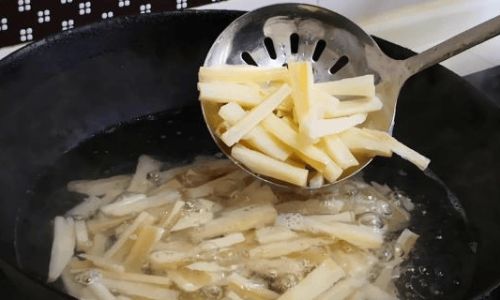
- Cantonese Cuisine: Often skips blanching for quick stir-fries, prioritizing texture and freshness.
- Sichuan Cuisine: May blanch lotus root tips to remove excess starch before adding them to spicy dishes, ensuring the vegetables don’t become gluey.
- Japanese Cuisine: In dishes like renkon no kinpira (simmered lotus root), blanching is rare, as the vegetable is sliced thinly and cooked directly in a sweet-savory sauce.
In Western interpretations of Asian cuisine, blanching is less common, with recipes often calling for direct stir-frying to maintain crispness.
Scientific Insights: What Happens During Blanching?
To better understand the debate, let’s examine the science behind blanching:
- Enzyme Inactivation: Blanching denatures enzymes like polyphenol oxidase, which cause browning. This preserves color but doesn’t affect safety if the vegetable is cooked thoroughly later.
- Cell Wall Breakdown: Heat softens pectin and cellulose in cell walls, altering texture. The longer the blanch, the softer the vegetable becomes.
- Starch Gelatinization: Blanching begins to break down starches, making them more soluble. This reduces stickiness but may lead to a less crisp result.
For lotus root tips, the key is balancing enzyme inactivation and starch reduction without compromising texture. A 30-second blanch in rapidly boiling water (followed by an ice bath) achieves this, but many cooks find even this step excessive.
How to Blanch Lotus Root Tips: A Step-by-Step Guide
If you opt to blanch, follow these steps for optimal results:
-
Prepare the Vegetables:
- Peel the lotus root tips (if desired; some leave the skin for added fiber).
- Slice them into thin rounds, julienne strips, or diagonal pieces for even cooking.
-
Boil Water:
Bring a large pot of water to a rolling boil. Add a pinch of salt or a splash of vinegar to enhance crispness and prevent browning.
-
Blanch:
- Submerge the lotus root tips in boiling water for 30 seconds to 1 minute.
- Stir gently to ensure even cooking.
-
Shock in Ice Water:
Immediately transfer the blanched tips to a bowl of ice water. This halts cooking and preserves color.
-
Drain and Pat Dry:
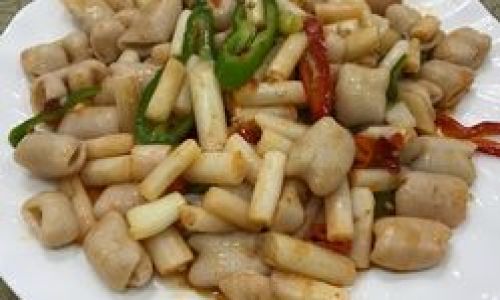
Remove the tips from the ice bath and drain thoroughly. Pat dry with a clean towel to prevent excess moisture from steaming during stir-frying.
How to Stir-Fry Lotus Root Tips Without Blanching
For those who prefer skipping blanching, here’s how to achieve perfect texture:
-
Prep the Vegetables:
Slice the tips as desired. Soak them in cold water with a splash of vinegar for 10 minutes to reduce browning.
-
Preheat the Wok:
Heat your wok or skillet over high heat until smoking. Add oil (peanut, vegetable, or sesame).
-
Stir-Fry Quickly:
- Add aromatics like garlic, ginger, or chili first.
- Toss in the lotus root tips and stir-fry for 2–3 minutes, keeping them in constant motion.
-
Season and Serve:
Add soy sauce, oyster sauce, or a pinch of sugar. Toss briefly and serve immediately to retain crispness.
Expert Tips for Perfect Lotus Root Tips
Regardless of your blanching preference, these tips will elevate your dish:
- Use Fresh Produce: Look for firm, unbruised lotus root tips with smooth skin. Avoid those with soft spots or a strong earthy odor.
- Slice Uniformly: Consistent thickness ensures even cooking.
- Don’t Overcrowd the Pan: Cook in batches if needed to prevent steaming.
- Balance Flavors: Pair lotus root tips with bold seasonings like garlic, black vinegar, or fermented bean paste to complement their mild taste.
When Blanching Is Non-Negotiable
While the debate rages, certain scenarios make blanching advisable:

- If the lotus root tips are gritty or muddy: Blanching removes trapped debris.
- For cold dishes or salads: Blanching softens the texture slightly, making it more palatable in raw preparations.
- When using thicker slices: Thicker pieces may require blanching to cook through without burning the exterior.
Conclusion: The Verdict
The decision to blanch lotus root tips before stir-frying ultimately hinges on personal preference, culinary tradition, and the specific dish. Blanching offers safety, texture control, and visual appeal, while skipping it preserves crispness, nutrients, and convenience.
For stir-fries where lotus root tips are the star, blanching may enhance their texture. However, in quick-cooked dishes with multiple ingredients, direct stir-frying often suffices. Experiment with both methods to discover your ideal balance—and don’t forget to savor the satisfying crunch either way.
Frequently Asked Questions
Q1: Can I blanch lotus root tips in advance?
Yes, but store them properly. After blanching and cooling, drain thoroughly and pat dry. Store in an airtight container in the refrigerator for up to 2 days.
Q2: Does blanching affect the nutritional value?
Some heat-sensitive nutrients may leach into the blanching water, but the loss is minimal. To retain more nutrients, use the blanching water in soups or sauces.
Q3: Can I substitute lotus root tips with another vegetable?
Jicama, water chestnuts, or bamboo shoots offer similar crunch but have distinct flavors. Adjust seasonings accordingly.
Q4: Why do my lotus root tips turn brown after cutting?
Oxidation. Soak sliced tips in acidulated water (water with lemon juice or vinegar) to delay browning.
Q5: Is blanching necessary for baby lotus root tips?
Baby tips are more tender, so blanching is optional. Adjust cooking time to avoid over-softening.
In the end, the kitchen is your laboratory. Whether you blanch or not, the goal remains the same: to celebrate the lotus root tip’s unique charm in every bite.
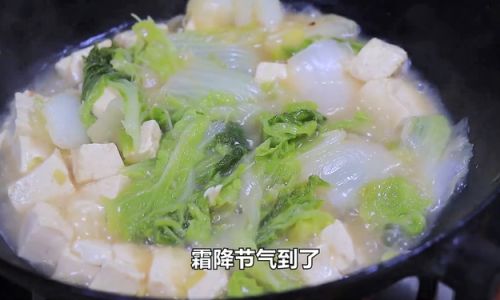
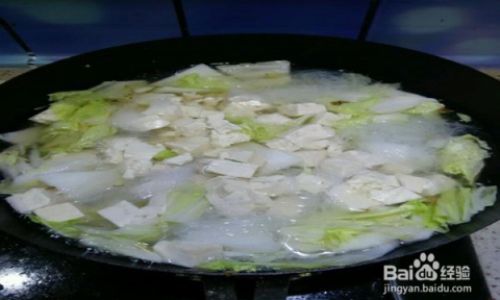

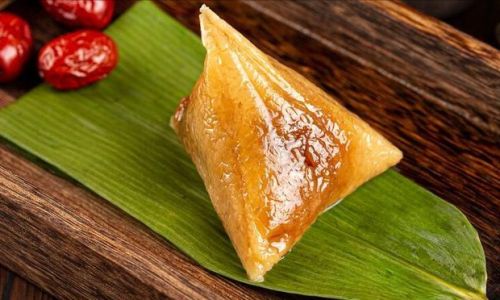
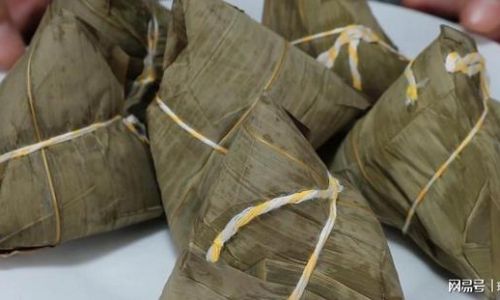
0 comments